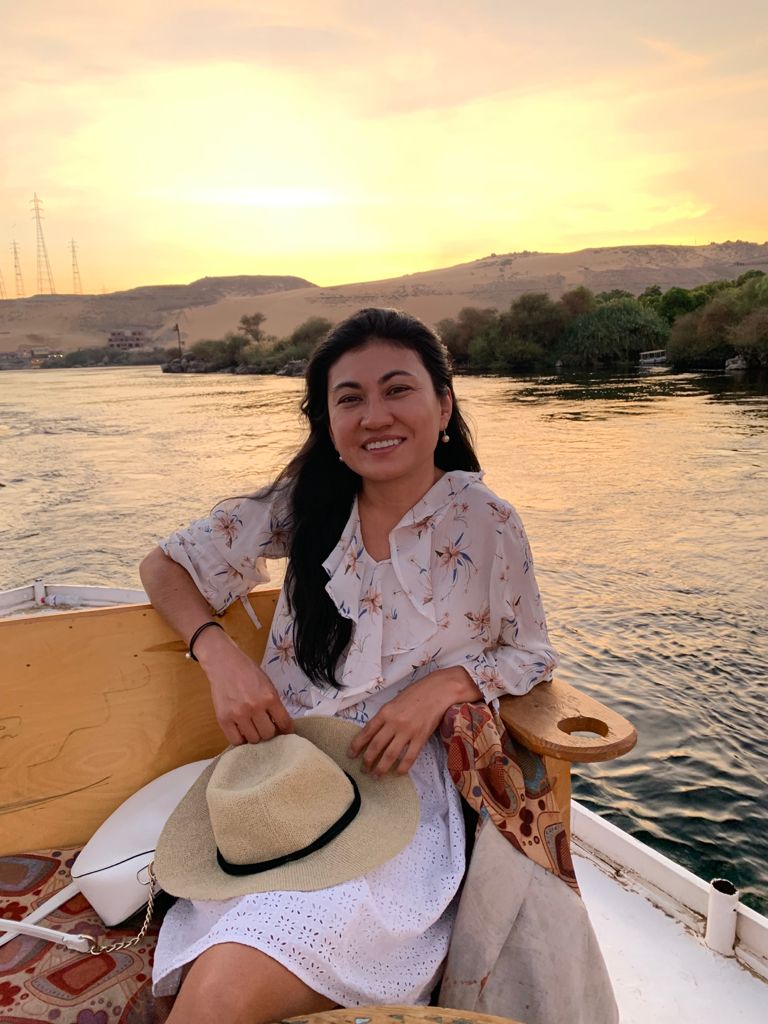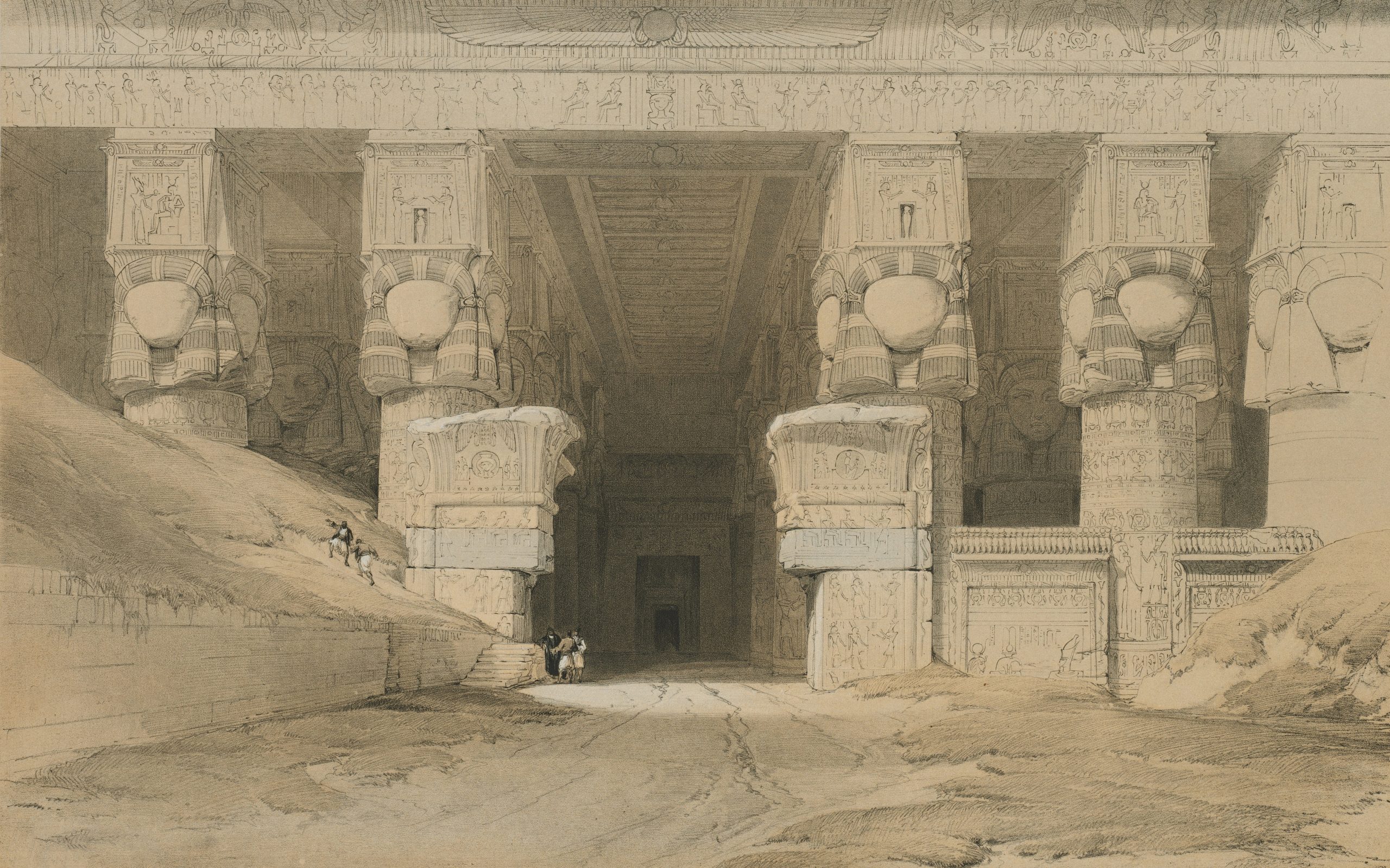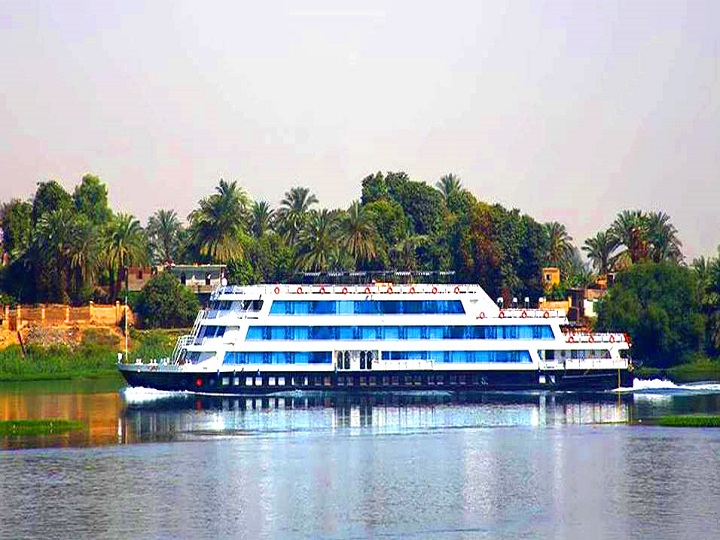This website uses cookies so that we can provide you with the best user experience possible. Cookie information is stored in your browser and performs functions such as recognising you when you return to our website and helping our team to understand which sections of the website you find most interesting and useful.

By admin on 02 Apr 2025
On Saturday 3rd of April around 20:30 local time; In a solemn procession, 22 royal pharaonic mummies were transferred in the evening from the Egyptian Museum in Tahrir Square in central Cairo to the “National Museum of Egyptian Civilization” located at Fustat in Cairo the capital city of Egypt, south of the capital, and the Director-General of UNESCO, Audrey Azoulay, who attended the celebration, said before our eyes the history of Egyptian civilization goes through.
What is The National Museum of Egyptian Civilization?
The National Museum of Egyptian Civilization is located in Fustat, Cairo, on an area of 33.5 acres. The museum accommodates fifty thousand artifacts that tell the stages of the development of the Egyptian civilization in addition to a presentation of the achievements of the Egyptian man in the various fields of life from the dawn of history until the present time, as it contains models, photographs, manuscripts, oil paintings, artistic masterpieces and monuments from the Stone, Pharaonic, Greco-Roman, Coptic, Arab and Sudanese civilizations And the modern era. The museum site overlooks a natural lake, which is Lake Ain Al Sira
What Happened in the Majestic Journey of the Pharaoh’s Golden Parade
- President Abdel Fattah Al-Sisi attended the ceremony and welcomed the royal motorcade consisting of 22 mummies upon his arrival, and the guard of honor fired 21 shots, greeting the king of Egypt in front of the museum.
- The procession included 22 Pharaonic mummies, 18 of them are kings and 4 are queens.
- The mummies were transported on carriages decorated in the Pharaonic style and engraved with Pharaonic drawings.
- The celebration began amid tight security measures and all entrances to the areas of the procession passed through were closed. The procession marched seven kilometers to the National Museum of Egyptian Civilization, a journey that lasted about 40 minutes.
- Each mummy was transported in a special capsule filled with nitrogen and free of oxygen, which allows the mummy to be preserved without being damaged by the effects of moisture, bacteria, fungi, insects, and dust. The capsules are also surrounded by special material to distribute pressure and reduce vibrations during the journey.
- Preparations for the processions took a total of four months.
- The ceremony was attended by Secretary-General of the World Tourism Organization; Zurab Pololikashvili, Director-General of UNESCO; Audrey Azoulay, Greek Minister of Tourism; Harris Theosharis, Saudi Minister of Tourism Ahmed Al-Khatib, and twenty country ambassadors of Japan, the Russian Federation, Belarus, Saudi Arabia, Cyprus, Greece, Italy, the Czech Republic, Hungary, Belgium, Romania, France, the European Union, and the United States.
- The procession included twenty-two cars belonging to the paratroops commanders at the Ministry of Defense, sixty motorcycles, one hundred fifty horses for the honor, and twenty-two chariots of war wheels in the Pharaonic style specially made and pulled by forty-four horses for each wheel, two horses, three hundred and thirty students From the Faculty of Physical Education, and three musical groups totaling one hundred and fifty people with one hundred and fifty drummers.
What is The Name of The 22 Royal Mummies?
- King Skanan Ra Ta’a II: Dynasty 17 (1550-1539 BC); One of the greatest kings of ancient Egypt, as he was the first to start the fight to expel the Hyksos from Egypt, and he led the golden parade
- Queen Ahmose Nefertari: wife of King Ahmose; Dynasty 18.
- Queen Meritamun: wife of King Amenhotep the First, Dynasty 18th.
- King Amenhotep the First: Era of the New Kingdom, Dynasty 18 (1525-1504 BC).
- King Tuthmosis the First, the era of the modern state, Dynasty 18 (1550-1292 BC).
- King Tuthmosis the Second: the era of the modern state, Dynasty 18 (1492-1479 BC).
- Queen Hatshepsut: New Kingdom, Dynasty 18, (1479-1458 BC).
- King Thutmose III: New Kingdom Era, Dynasty 18 (1479-1425 BC).
- King Amenhotep II: New Kingdom Era, Dynasty 18 (1428-1397 BC).
- King Tuthmosis the Fourth, the era of the modern state, Dynasty 18 (1397-1388 BC).
- King Amenhotep III: New Kingdom Era, Dynasty 18
- Queen T: The royal wife of Amenhotep III Dynasty 18
- King Seti I: The era of the modern state, Dynasty 19 (1290-1279 BC).
- King Ramses II: Considered the most famous king of the New Kingdom, Dynasty 19 (1279-1213 BC).
- King Merenptah: New Kingdom Era, Dynasty 19 (1213 – 1203 BC).
- King Seti II: The 19th Dynasty in the New Kingdom.
- King Si Ptah: The penultimate king in the Nineteenth Dynasty.
- King Ramses III, New Kingdom Era, Dynasty 20 (1183-1152 BC).
- King Ramses IV, New Kingdom Era, Dynasty 20 (1152-1145 BC).
- King Ramses V, New Kingdom Era, Dynasty of 20 (1145-1142 BC).
- King Ramses VI, New Kingdom Era, Dynasty 20 (1143-1136 BC).
- King Ramses IX, New Kingdom, Dynasty 20 (1125-1107 BC).
When and where can you visit the 22 Golden Mummies?
Royal mummies will be displayed in the National Museum of Egyptian Civilization in Fustat, which was transferred to it from the Egyptian Museum in Tahrir in the royal mummies procession, starting on April 18 this month
How Much is The Ticket Price for The National Museum of Egyptian Civilization?
For foreign citizens, the ticket costs 200 Egyptian pounds, and for students it will cost LE 60. For Egyptian adults, the ticket costs LE 60, and LE 30 for students. They did not announce the children’s ticket price, but expected to be %50% discount from the adult rate.
How can you visit the National Museum of Egyptian Civilization?
If you are coming to Cairo on your own, then you can use Uber, to drive to the Museum, by your ticket and enjoy the tour, or if you are booking Egypt Tours Packages from USA or with a local tour operator ask them to add the trip into your itinerary, or you can book Cairo and Nile Cruise
As of April 2025, the 22 royal mummies from the Pharaohs’ Golden Parade continue to be a central attraction at Cairo’s National Museum of Egyptian Civilization (NMEC). These mummies, including notable figures like Ramses II and Queen Hatshepsut, are displayed in the Royal Mummies Hall, designed to replicate the ambiance of ancient tombs. Visitors have praised the museum’s presentation, noting the immersive experience it offers
This article was updated and re-written in part by Hesham El Gammal; on April 2nd 2025 + fact-checked.
Categories
- Egypt and Jordan Tours (12)
- Egypt Destinations (26)
- Egypt Nile Cruises (40)
- Egypt Sightseeing (14)
- Egypt Tour Packages (17)
- infographics (1)
-

Nile Cruisers Reviews
25 Mar 2025
-

Why Choose Nile Cruisers to Book Your Egypt Nile Cruise?
12 Dec 2025
-

Celebrate Christmas in Egypt: Best Egypt Travel Tour Packages for Year-End Getaways
12 Dec 2025
-

Make Your Year-End Special: Festive Egypt Tour Packages for Winter Travel
12 Dec 2025
-

The Lake Nasser Luxury Cruise Ships
09 Dec 2025
-

Sacred Egypt – Spiritual Tours
07 Dec 2025
-

Nile Cruise from Cairo to Aswan
06 Dec 2025
-

Nile Cruisers Reviews
25 Mar 2025
-

Why Choose Nile Cruisers to Book Your Egypt Nile Cruise?
12 Dec 2025
-

Celebrate Christmas in Egypt: Best Egypt Travel Tour Packages for Year-End Getaways
12 Dec 2025
-

Make Your Year-End Special: Festive Egypt Tour Packages for Winter Travel
12 Dec 2025
-

The Lake Nasser Luxury Cruise Ships
09 Dec 2025












Comments